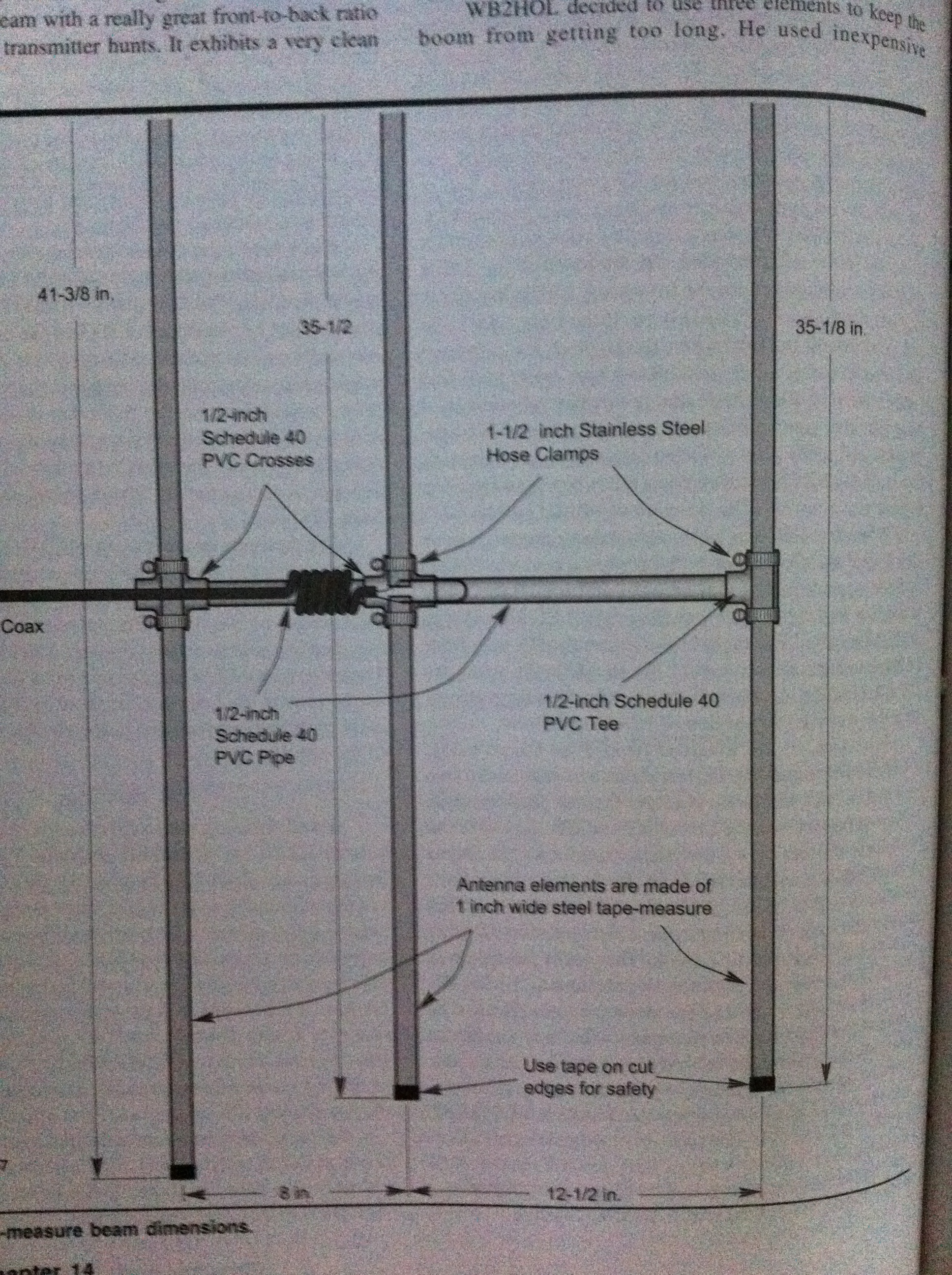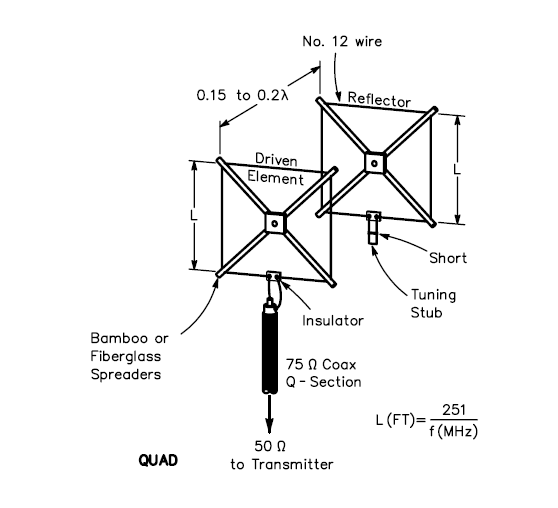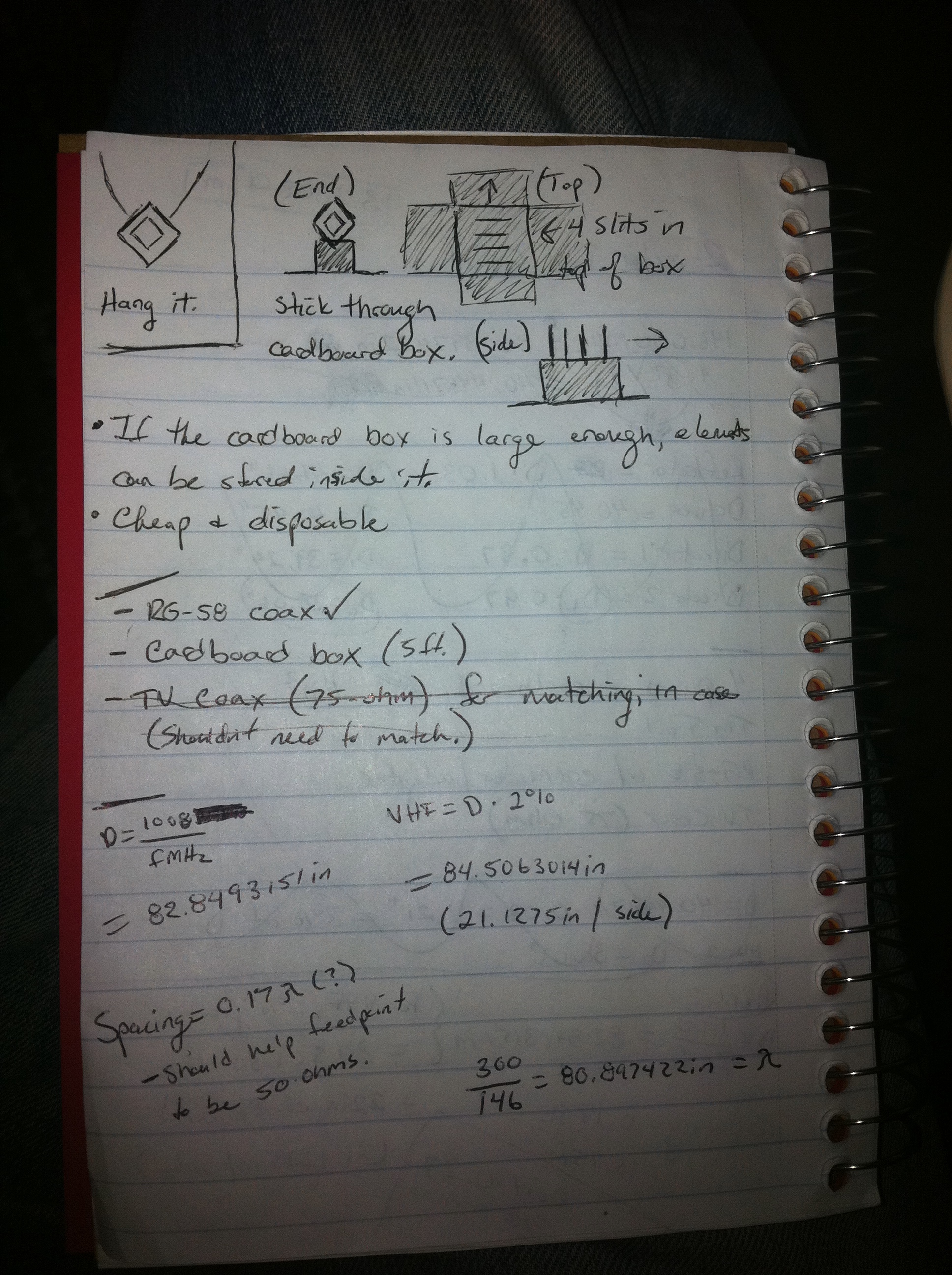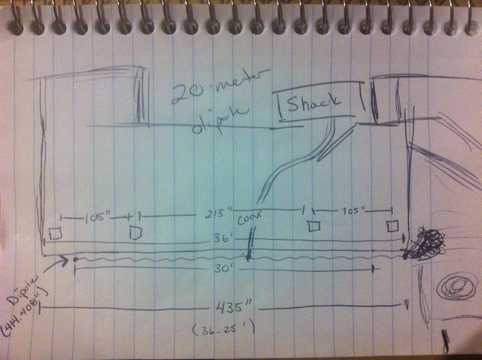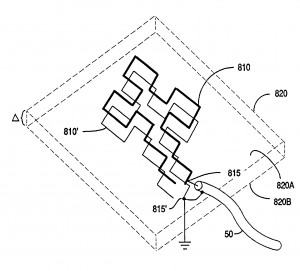With the ARRL VHF Sweepstakes coming up this weekend, I wanted to construct a directional beam antenna for use on one of the local mountains for some of the contest. I wanted something that is simple, cheap, quick, portable, and, most importantly, effective. I thought back and recalled a single element quad antenna for 2-meters that I had constructed in college, for my amateur radio club to use locally. I wanted to make it more effective, so I decided to try to work out a design for a multiple element quad for 2-meters.
Here’s what a quad antenna looks like. This is a 2-element design.
My “design” will have four elements, a reflector, driven, and two directors. This will help to focus the beam of RF energy into a more concentrated and condensed area. That basically helps to add gain and sensitivity in the direction that the beam is pointing. The elements will be taped to square (diamond) shaped pieces of cardboard, and will be made of one strip of tin foil, 1/2″ wide, in a way that will trace the edge of the cardboard. The completed cardboard elements will then be placed in to slits made in the bottom of a large cardboard box, which will sit on its top as a support for the antenna. Tuning (if necessary) will be achieved by placing the driven element in different pre-tested and tuned slits.
Here’s what my design looks like so far. Crude, isn’t it?

Last night, I bought some of the supplies that I will need. 50ft. of RG-58 coax. I asked at the local Lowe’s if they had a cardboard box that I could have, because I will need to have one about 5ft. in length to accommodate the elements of the antenna. I already have tin foil and solder / soldering iron at home. That’s about all I will need. I will post this project, along with pictures, once it is completed, on the “Projects” page.
